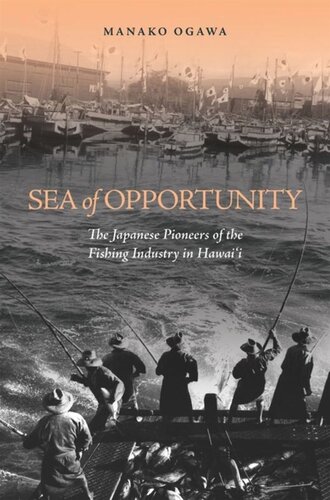

Most ebook files are in PDF format, so you can easily read them using various software such as Foxit Reader or directly on the Google Chrome browser.
Some ebook files are released by publishers in other formats such as .awz, .mobi, .epub, .fb2, etc. You may need to install specific software to read these formats on mobile/PC, such as Calibre.
Please read the tutorial at this link: https://ebookbell.com/faq
We offer FREE conversion to the popular formats you request; however, this may take some time. Therefore, right after payment, please email us, and we will try to provide the service as quickly as possible.
For some exceptional file formats or broken links (if any), please refrain from opening any disputes. Instead, email us first, and we will try to assist within a maximum of 6 hours.
EbookBell Team

5.0
110 reviewsSea of Opportunity: The Japanese Pioneers of the Fishing Industry in Hawaii is a part historical and a part ethnographic study of Japanese fisheries in Hawaii from the late nineteenth century to contemporary times. When Japanese fishermen arrived in Hawaii from coastal communities in Japan, mainly Hiroshima, Yamaguchi, and Wakayama, they brought fishing techniques developed in their homeland to the Hawaiian archipelago and adapted them to new circumstances. Within a short period of time, they expanded the local fisheries into one of the pillars of Hawaii's economy. Unlike most of the previous works on Japanese immigrants to Hawaii, which focus on sugarcane plantations, this breakthrough book is the first comprehensive history of Japanese as fishermen.
Original in its conception and research, the book begins with the early accomplishments of Japanese fishermen who advanced into foreign waters and situates their activities in the contexts of both Japan and Hawaii. Skillfully using sources in various languages, the author complicates the history of Japanese immigration to Hawaii by adding an obvious yet forgotten transoceanic agent—fishermen.
Instead of challenging the notion of a land-based history of the local Japanese people in Hawaii, Ogawa tactfully shifts the focus by showing us that one of the earliest Japanese communities was made up of fishermen, whose pre–World War II success was a direct result of the growing plantation communities. She argues that their mobility enabled fishermen to retain homes on different shores much more easily than their farmer counterparts, but the December 7, 1941, attack on Pearl Harbor affected both groups just the same. The postwar efforts to reconstruct Hawaii's fishing industry included transformation of its ethnic environment from Japanese domination into one that was supported by multiethnic groups. The arrival of Okinawan fishermen was critical in this development and reveals a complex cultural and political relationship between Hawaii, Okinawa, and Japan. Personal interviews conducted by Ogawa give these fishermen a chance to recount their often difficult transoceanic stories in their own language. Their unflappable entrepreneurship and ability to survive in different waters and lands parallel the experiences of many immigrants to Hawaii. Ogawa reminds readers of the reality of overfishing in Hawaii and what it means to the fishing communities whose sustenance relies heavily on the sea.